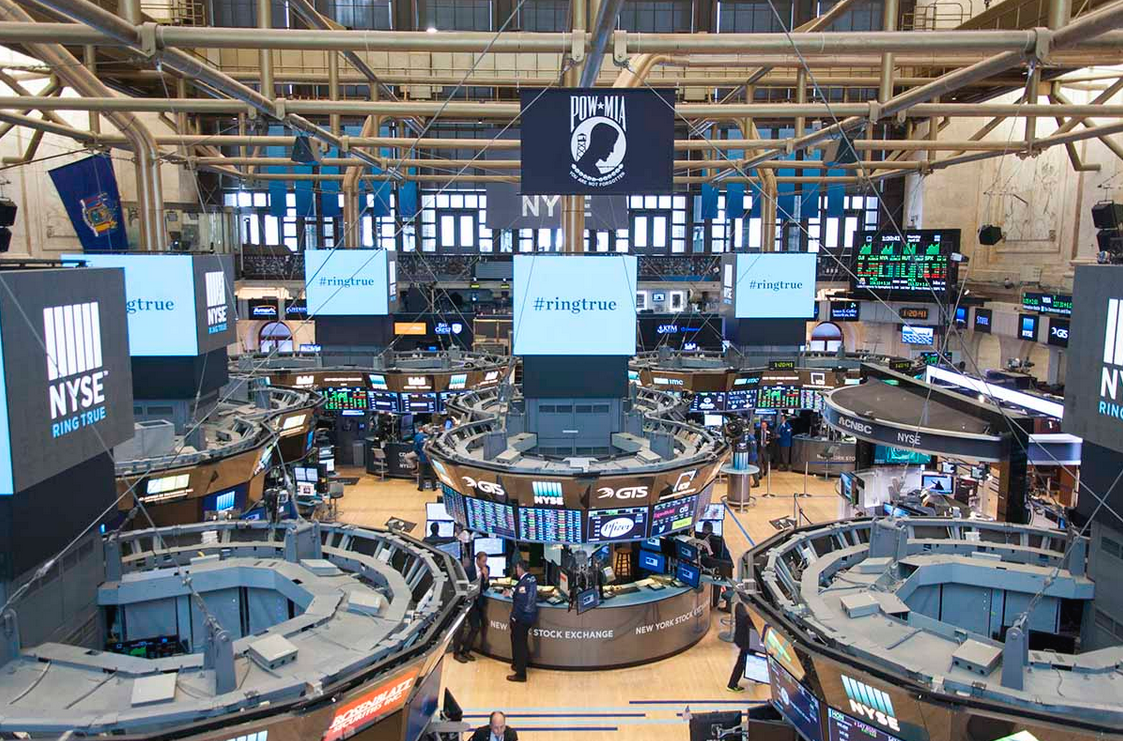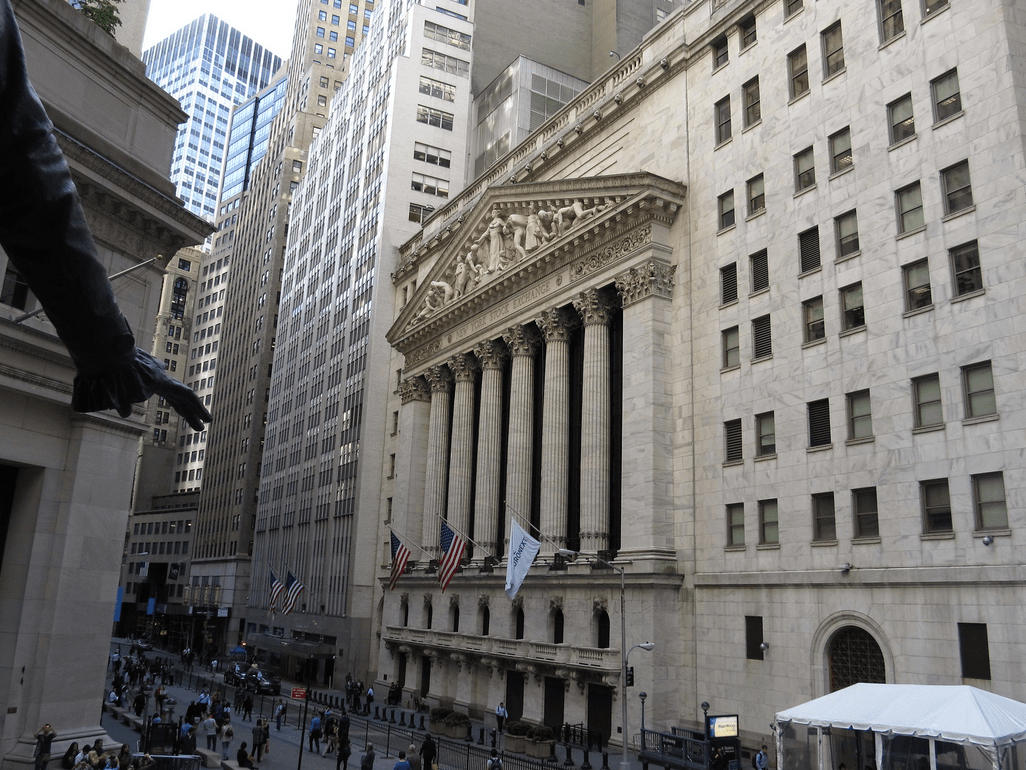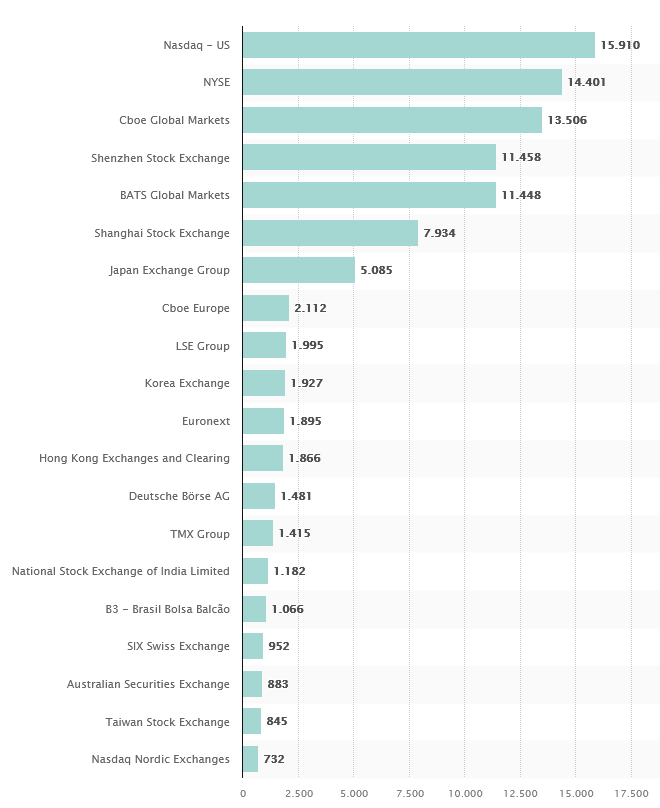Would you like to invest your money? Get in touch with an expert:
The New York Stock Exchange (NYSE) is one of the world's largest stock exchanges. With the acquisition of Archipelago (electronic trading exchange) on March 8, 2006, the New York Stock Exchange became a public institution. After merging with Euronext, the largest stock exchange in Europe, in 2007, NYSE Euronext was established. NYSE Euronext was taken over by Intercontinental Exchange (ICE), the current parent company of the New York Stock Exchange.
Behind the scenes of the New York Stock Exchange
Source: untappedcities.com
NYSE is located on Wall Street in New York City. Two trading floors are available on the NYSE, one for stocks and one for American Options Exchange. The main buildings of the NYSE (18 Broad St. and 11 Wall St.) have been classified as historical landscapes since 1987. In August 2021, the NYSE was estimated to have a market capitalization of $26.64 trillion, making it the world's largest stock exchange by market capitalization.
Main Entrance NYSE 18 Broad Street, Manhattan, New York
Source: flickr.com
NYSE Entrance, 11 Wall Street, Manhattan, New York
Source: flickr.com
New York Stock Exchange trades are conducted in a continuous auction. The NYSE is well known for its floor trading. Today, the majority of NYSE stock transactions are carried out electronically, which means that buyers and sellers are matched electronically. More about the price mechanism can be found in the article on supply and demand. Even though most transactions are now conducted electronically, the New York Stock Exchange continues to operate as a hybrid market. In this manner, stock brokers can send orders either electronically or directly to the trading floor, where they will be executed by floor traders.
In terms of equity trading volume from January to December 2019, the NYSE was ranked among the top three exchanges in the world:
Trading volume in shares January-December 2019 (in billions/US-Dollar)
Source: www.statista.com
Trading began and ended with the sound of a gong on the NYSE originally. A Chinese gong was introduced in 1870. The gong was replaced with a brass bell when it was relocated to its current location. Opening bells are rung at 9:30 AM Eastern Time, and closing bells are rung at 4:00 PM Eastern Time. There are certain U.S. holidays on which the exchange is closed. NYSE sometimes closes the Friday before these holidays when they fall on a Saturday. In the event that the holiday falls on a Sunday, the NYSE may be closed on Monday.
The opening and closing bells play an important role in marking financial events as well as celebrating important events that take place in New York City. The opportunity to ring the NYSE bell is an honor. The bell is rung by a wide variety of people, including business leaders and celebrities. The New York City Police and Fire Departments were also granted this privilege during the September 11, 2001 attacks.
At 68 Wall Street, in 1792, 24 brokers and merchants signed the Buttonwood Agreement, which established the rules for securities trading. Originally, the organization was known as the New York Stock & Exchange Board. In 1863, the current name was adopted. There were only male traders participating in the NYSE at that time. Muriel Siebert was the first female trader to be allowed to participate in trading in 1967.
The NYSE became a non-profit company in 1971, and a publicly traded company in 2006. Trading stocks began to be conducted electronically during this period. Following the merger with Euronext in 2007, the NYSE acquired the American Stock Exchange in 2008. In later years, the Intercontinental Exchange acquired the NYSE for $8.2 billion.
The following are a few important dates in the history of the NYSE:
- October 24, 1929: The largest stock market crash in U.S. history, which continued until black Tuesday, and marked the beginning of the Great Depression.
- October 1, 1934: NYSE is registered with the Securities and Exchange Commission as a national securities exchange.
- October 19, 1987: In a single day, the Dow Jones Industrial Average (DJIA) drops 508 points, a loss of 22.6%.
- September 11, 2001: Trading was closed following the September 11 attacks for four days and reopened on September 17. In the five days following the reopening of the market, approximately $1.4 trillion was lost. A loss of this magnitude has never been experienced by the New York Stock Exchange before.
- October 2008: The American Stock Exchange is acquired by NYSE Euronext for $260 million in stock.
- May 6, 2010: During the course of the day, the DJIA experienced its largest intraday decline since the October 19, 1987 crash, dropping 998 points.
- December 20, 2012: In the course of an $8 billion stock swap, ICE proposed to buy NYSE Euronext.
- May 1, 2014: The Securities and Exchange Commission fined the NYSE $4.5 million for allegedly violating market rules.
- May 25, 2018: The NYSE is led for the first time by a female president, Stacey Cunningham.
- March 16, 2020: Rising fears of a COVID-19 pandemic caused the DJIA to record its largest one-day loss in history, falling 2,997.10 points from its previous close (in %, the third worst day ever).
- March 23, 2020: Because of the COVID-19 pandemic, the NYSE temporarily closes its floor trading operations. However, electronic trading continues.
- March 24, 2020: In response to expectations of a stimulus relief bill, the DJIA posts its largest one-day gain in history (in %, the fifth best day ever).
Would you like to invest your money?
Speak to an expert.
Your first appointment is free of charge.







